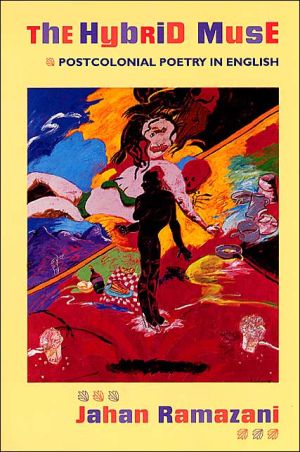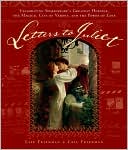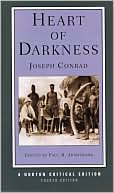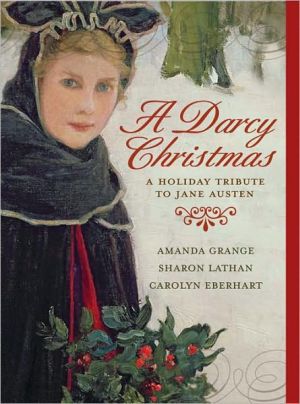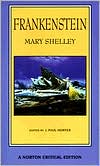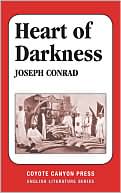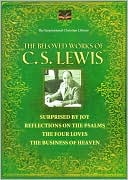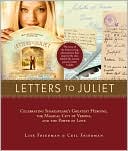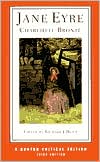The Hybrid Muse: Postcolonial Poetry in English
In recent decades, much of the most vital literature written in English has come from the former colonies of Great Britain. But while postcolonial novelists such as Chinua Achebe, Salman Rushdie, and V. S. Naipaul have been widely celebrated, the achievements of postcolonial poets have been strangely neglected.\ In The Hybrid Muse, Jahan Ramazani argues that postcolonial poets have also dramatically expanded the atlas of literature in English, infusing modern and contemporary poetry with...
Search in google:
In recent decades, much of the most vital literature written in English has come from the former colonies of Great Britain. But while postcolonial novelists have been widely celebrated, the achievements of postcolonial poets have been strangely neglected. In The Hybrid Muse, Jahan Ramazani argues that postcolonial poets have also dramatically expanded the atlas of literature in English, infusing modern and contemporary poetry with indigenous metaphors, rhythms, and creoles. A rich and vibrant poetry, he contends, has issued from the hybridization of the English muse with the long resident muses of Africa, India, and the Caribbean. Engaging an array of critical topics, from the aesthetics of irony and metaphor to the politics of nationalism and anthropology, Ramazani reconceptualizes issues central to our understanding of both postcolonial literatures and twentieth-century poetry. The first book of its kind, The Hybrid Muse will help internationalize the study of poetry and, in turn, strengthen the place of poetry in postcolonial studies.Publishers WeeklyWhile crowds admire South Asian and African novelists like Rushdie or Achebe, American readers academic and otherwise don't care enough about verse from developing nations. Jahan Ramazani (Poetry of Mourning) hopes to change all that with The Hybrid Muse: Postcolonial Poetry in English. In cogent and illuminating chapters, Ramazani (who teaches at the University of Virginia) considers both the cultural work and the aesthetic choices of five key poets, among them Louise Bennett (Jamaica), Okot p'Bitek (Uganda), A.K. Ramanujan (India) and Nobel laureate Derek Walcott. (Oct.) Copyright 2001 Cahners Business Information.
The Hybrid Muse: Postcolonial Poetry in English\ \ By Jahan Ramazani \ University of Chicago Press\ Copyright © 2001 Jahan Ramazani\ All right reserved.\ ISBN: 0226703436 \ \ \ CHAPTER ONE - Introduction \ \ In recent decades, much of the most vital writing in English has come from Britain's former colonies in the so-called Third World. For readers of fiction, the geographic explosion of anglophone literature is by now self-evident: postcolonial novelists such as Chinua Achebe, V. S. Naipaul, Salman Rushdie, and Jamaica Kincaid have redrawn the map of English-language fiction in our time. By comparison, the notion of "contemporary poetry" remains strikingly provincial in the anglophone West. With the exception of Derek Walcott's work, contemporary poetry is typically limited to the United States, Britain, and Ireland, perhaps with some inclusion of former white settler colonies such as Canada. Whether favoring poetry that is postmodern or postconfessional, neoformalist or avant-garde, ethnic or mainstream, most anthologies, critical essays, and conferences reassert these boundaries. In recent years, conceptions of American poetry have expanded to include minority writers of African, Asian, and Latino descent, and the domain of British poetry has also begun to include "black British" writers. But the story of the globalization of English-language poetry remains largely untold.\ \ Yet a rich and vibrant poetry hasissued from the hybridization of the English muse with the long-resident muses of Africa, India, the Caribbean, and other decolonizing territories of the British empire. Postcolonial poets have dramatically expanded the contours of English-language poetry by infusing it with indigenous metaphors and rhythms, creoles and genres. The Indian poet A. K. Ramanujan imports the metaphoric compression of literary Tamil into English, the Jamaican poet Louise Bennett the phonemic wit and play of Jamaican creole words like "boonoonoonoos" for "pretty" or "boogooyagga" for "worthless." The Ugandan poet Okot p'Bitek adapts graphic idioms, images, and rhetorical strategies from Acoli songs: his spurned character Lawino complains--in language unprecedented in English poetry--that her husband's tongue is "hot like the penis of the bee" and "fierce like the arrow of the scorpion, / Deadly like the spear of the buffalo-hornet." At the same time, postcolonial poets have brilliantly remade the literary language and forms of the colonizer. Wole Soyinka engrafts resonant Elizabethan English onto Yoruba syntax and myth, Derek Walcott turns the Greek Philoctetes into an allegorical figure for postcolonial affliction, and Lorna Goodison adapts Western figures of femininity, such as Penelope and the Mermaid, to a Caribbean geography and history. Belonging to multiple worlds that are transformed by their convergence, postcolonial poets indigenize the Western and anglicize the native to create exciting new possibilities for English-language poetry. \ \ In light of these achievements, why is postcolonial poetry so much less visible than fiction and drama? T. S. Eliot's remark in "The Social Function of Poetry" (1945) remains suggestive more than half a century later: "No art," he said, "is more stubbornly national than poetry." For Eliot, "Poetry is much more local than prose," partly because "poetry has primarily to do with the expression of feeling and emotion." This way of thinking about poetry can be traced back hundreds of years to European romanticism and the belief that the nation defined and expressed itself through its poetry, the ultimate embodiment of the Sprachgeist. If poetry purifies the dialect of the tribe, then the poet or critic may feel little need to bother with the dialects of alien tribes. But the idea of a national literature was already being stretched by Eliot's own transnational affiliations and practices, dramatized by the rapid cartographic displacements in The Waste Land from London to Mylae, Carthage, Smyrna, and the Himalayas. Further attenuated by poets of ethnic and racial minorities, the nationalist paradigm faces yet more erosion with the emergence of "world poetry" as a rubric. But here, too, both change and recalcitrance are evident. When three major anthologies of world poetry-- one avant-garde, the other two mainstream--were published between 1996 and 1998, the popular academic journal Lingua Franca translated the results in a world map "scaled according to the number of poets represented" in the anthologies. Although the map presumably showed the new global face of poetry studies, all of Africa, India, and the Caribbean could have fit within a quarter of the space allotted to the United States or Europe. Thus, neither the mainstream nor the postmodern version of world poetry has transfigured the geography of English-language poetry. A much earlier calculation of relative literary worth, Macaulay's infamous 1835 minute on Indian education, is a benchmark of how much such attitudes have and have not evolved: "A single shelf of a good European Library," he reckoned, "was worth the whole native literature of India and Arabia." \ \ At opposite ends of a polarized field, two recent American anthologies of contemporary poetry provide further clues as to why poetry studies has remained particularly resistant to internationalization. If the assumption is made, in the words of a widely used mainstream anthology, that "what distinguishes the work of contemporary poets . . . is especially the presence and vitality of the personal element," then a principal reason for inattention to postcolonial poets becomes clear, since personal "expression of feeling and emotion" is obviously inadequate as a paradigm for their work. Nor are the terms of valorization for postmodern poetry germane. The signal ideas vaunted in a representative anthology are the "empty sign," "empty words," the "aleatory," writtenness, inorganicity, and the effacement of the signified. But the idea that the poetic "I" represents either an inviolably private interior or an ideological sham bears little on the first-person pronoun in a short poem about the linguistic tear of the Middle Passage by a writer of Guyanese origin, Grace Nichols: \ I have crossed an ocean\ \ I have lost my tongue\ \ from the root of the old one\ \ a new one has sprung\ Neither poetry conceived as the lyric expression of personal feeling nor as the postmodern negation of commodified language is sufficient to help us enter into the work of Louise Bennett, Okot p'Bitek, or A. K. Ramanujan, whose poetry mediates between oral practices and imported literary forms; reclaims indigenous histories, landscapes, and traditions; and constitutes "imagined communities" in the wake of their threatened colonial destruction.\ \ If the field of contemporary poetry has been unreceptive to the expansion of English-language poetry beyond the West, then perhaps postcolonial studies could be presumed to embrace this body of work. Unfortunately, it hasn't. In contrast to the many volumes on fiction and even drama, there are no books on postcolonial poetry of the Third World. The same pattern holds for critical essays on postcolonial literatures: each of two significant volumes, for example, contains five essays explicitly on fiction but none on poetry. Similarly, one of the most cogent book-length overviews of postcolonial studies cites no poems as examples. At a time when "world," "Third World," "non-Western," and "postcolonial literatures" in English have become ever more prominent in the globalizing curricula of secondary schools and colleges, how can we explain this relative neglect? Although critical interest in poetry has suffered a general decline in recent decades, assumptions within postcolonial studies compound the problem. On the one hand, postcolonial criticism is largely grounded in mimetic presuppositions about literature. But since poetry mediates experience through a language of exceptional figural and formal density, it is a less transparent medium by which to recuperate the history, politics, and sociology of postcolonial societies; it is less favorable than other genres for curricular expeditions into the social history of the Third World; and, consequently, it is harder to annex as textual synecdoche for the social world of Nigeria, Trinidad, or India. On the other hand, postcolonial theory has been preoccupied with continually interrogating itself, rehearsing questions about its complicity in European discourses, the (non)representability of "other" cultures, and the definition of its primary terms, including "nation," "hybridity," "the other," and "postcolonial" itself. While theoretical inquiry is not necessarily inimical to poetry (informing, indeed, my analysis), the genre also demands specifically literary modes of response and recognition--of figurative devices, generic codes, stanzaic patterns, prosodic twists, and allusive turns. \ \ Postcolonial studies and poetics nevertheless offer a potentially valuable blend of strategies for exploring this important and varied body of work. Poetics helps to reveal the literary energies of these texts, which aesthetically embody the postcolonial condition in particular linguistic and formal structures. The best postcolonial poems are resonant and compelling in no small part because of their figurative reach, verbal dexterity, tonal complexity, and their imaginative transformation of inherited genres, forms, and dramatic characters. In turn, the concept of postcoloniality--decolonizing indigenous cultures once subjugated under colonial rule and responding to its continuing aftermath--provides a comparative framework more bounded and historical than "world poetry" but less restrictive than "national" or "regional" poetry. Although the terms "postcolonial," "Third World," and "non-Western" have often been criticized for erasing cultural and historical differences, they can be useful in highlighting similarities and differences among various cultures still grappling with their colonial histories. They can help to illuminate the robust variety of indigenous cultures living in the shadow of empire, whereas more local perspectives often make it difficult to recognize such cross-cultural relationships. Further, even supposedly particularist frameworks cannot help but yoke together heterogeneous experiences under labels of region (Asia), nation (India), religion (Islam), or some combination (Muslim India). Criticism and anthologies tend to focus on a national or regional group of writers, such as West Indian poets, African poets, Indian poets. A poet like A. K. Ramanujan is almost always read as "Indian," Louise Bennett as "Jamaican" or "West Indian," Okot p'Bitek as "African," "East African," or "Ugandan." These contexts are indispensable, but they are not exhaustive, so I use the postcolonial horizon in concert with them to reveal the cross-cultural dimensions of the poetry. A few proleptic examples may be illustrative. Boldly mocking Jamaican racism, emigration, and even independence, Louise Bennett participates in both a Jamaican performance tradition and a transnational poetics of postcolonial irony. A. K. Ramanujan compares an artificial waterfall inside a Chicago bank to "wavering snakeskins" and thus borrows an ancient Tamil metaphor, but we miss something unless we also notice that his double vision is also more broadly postcolonial. Okot p'Bitek was trained at Oxford as an anthropologist specializing in East African oral literature, yet his poetry instances a postcolonial ambivalence toward the discipline, both appropriating ethnographic modes of representation and fiercely rejecting British anthropology's Eurocentric values and Christian bias in the 1960s. \ \ The scope of "postcoloniality" is vast, so in this study I circumscribe it with the specificities of English colonial history, language, and literature and focus on three major areas of the anglophone Third World: India, Africa, and the Caribbean. I also leave aside the white settler colonies or "dominions" of Canada, Australia, and New Zealand because their dominant literary practices and economies have more in common with the West's than with the anglophone Third World's. Despite critical efforts at establishing a unitary vocabulary for all varieties of postcoloniality, enormous differences in the colonial experience of these First World countries and in their ties with the "motherland" set them apart. An island with a long and violent colonial history, Ireland is a fascinatingly ambiguous case, now of the First World but once kin to the Third. Exploring the controversial question of whether Yeats should be read as a postcolonial poet, I discuss this liminal example to reexamine some of the major concepts through which postcoloniality has been defined and debated: after colonialism, anticolonialism, nationalism, the Third World, and hybridity.\ \ In place of a general survey of regions and trends, I try to make vivid the achievement of postcolonial poetry in English through case studies of four Third World poets and an Irishman. I begin with reinterpretations of poets well-known to Western readers--W. B. Yeats (1865-1939) and Derek Walcott (b. 1930)--and then turn to authors known chiefly among followers of regional or national traditions: A. K. Ramanujan (1929-93), Louise Bennett (b. 1919), and Okot p'Bitek (1931-82). Though a small sampling, the preeminent anglophone poets of Ireland, Saint Lucia, India, Jamaica, and Uganda represent a wide range of literary practices and proclivities, from the literary internationalism of Yeats and Walcott to the "folk" orality of Okot and Bennett, from Walcott's massive epic and Okot's long poems to Bennett's pithy ballads, Yeats's concentrated lyrics, and Ramanujan's ruminative texts. Arrayed chronologically, their work spans much of the twentieth century, with Yeats publishing perhaps his best poetry in the 1910s, 1920s, and 1930s, Bennett publishing hers in the 1940s, 1950s, and early 1960s, Okot his in the mid- and late 1960s, Ramanujan his in the 1970s and 1980s, and Walcott--to single out his masterpiece from over half a century of achievement--in 1990. \ \ In view of their regional, historical, and aesthetic differences, what could these widely diverse poets have in common? To begin with, they were all born to colonial populations under British rule and continued to write in the aftermath of political decolonization. They all had a British colonial education, which Walcott has called "the greatest bequest the Empire made": "Precisely because of their limitations our early education must have ranked with the finest in the world." This gift may also have been the greatest curse of empire, purveyed by missionaries and by imperial governments as a tool for altering native minds and even turning them against themselves. Educated as imperial subjects yet immersed in indigenous traditions and customs, these postcolonial poets grew up in the potentially productive tension between an imposed and an inherited culture--productive, that is, for the powerful literary mind that can create imaginative forms to articulate the dualities, ironies, and ambiguities of this cultural in-betweenness. Poetry--a genre rich in paradox and multivalent symbols, irony and metaphor--is well-suited to mediating and registering the contradictions of split cultural experience. These poets respond with emotional ambivalence and linguistic versatility to the experience of living after colonialism, between non-Western traditions and modernity, at a moment of explosive change in the relation between Western and "native" cultures. \ \ Postcolonial studies offers the metaphor of "hybridity" as a potent lens through which to explore interculturation in the postcolonial world. Since the term can be misleading if it muffles the power differences between cultures or oversimplifies the multilayered deposits within any single culture, I use it to describe the intensified hybridization of already mixed and politically unequal cultures, where "native" represents a prior knotting together of diverse strands, as does the amalgamation "British." A number of theorists have deepened our understanding of postcoloniality as interstitial, beyond identitarian boundaries. In influential variations on postcolonial hybridity, Edward Said has theorized the "global," Homi Bhabha "the Third Space," Stuart Hall "diaspora identities," James Clifford "traveling cultures," Gayatri Spivak "the 'native' informant," and Mary Louise Pratt "contact zones." Other writers have revealed the hybridity of specific postcolonial regions. "Cultural traditions in India are indissolubly plural and often conflicting," Ramanujan observes. Kwame Anthony Appiah highlights the "extraordinary diversity of Africa's peoples and its cultures," and Paul Gilroy "the stereophonic, bilingual, or bifocal cultural forms" of the African diaspora. The Martinican novelist and theorist Edouard Glissant has formulated the "cross-culturality," the Barbadian poet and historian Edward Kamau Brathwaite the "creolization" of the Caribbean. Although Mikhail Bakhtin relegates poetry to the status of purified, monologic utterance, postcolonial poetry instances the "artistic hybridization" he identifies with the novel. To the extent that postcolonial poems unconsciously mix the "sociolinguistic . . . world views" of colonizer and colonized, they are what he defines as "organic hybrids." They are also often what he calls "intentional hybrids," in which different "socio-linguistic points of view" are "set against each other dialogically," with an emphasis on the "collision" between First World and Third. \ \ Members of a small educated elite, anglophone poets of the Third World are perhaps especially hybridized by their intensive exposure to Western ideas and values through higher education, travel, even expatriation. Journeying in their midtwenties to the metropole, Bennett studied at the Royal Academy of Dramatic Art in London and Okot p'Bitek at Oxford's Institute of Social Anthropology. Further complicating the matrices of identity, many postcolonial poets have an oblique relation to the native culture that they are assumed to represent. Both Yeats and Walcott grew up in predominantly Catholic countries but belonged to Protestant minorities. Ramanujan spoke Tamil at home, along with English, in an area where Kannada was the regional language. These intercultural and intracultural dynamics--whether experienced as a condition of tragic mixture and alienation or as the comic integration of multiple energies and sources--have fueled some of the most powerful poetry of our time. While many First World poets have circumnavigated the postwar globe in search of fresh encounters, postcolonial poets, even when staying at home, have long inhabited cultural spaces that are thoroughly multilingual and multicultural.\ \ Before examining the hybrid language and form of postcolonial poetry, we need to remind ourselves of the primary historical cause of this confluence between Third World and Western cultures. Anglophone poetry in the Third World, like many other culturally hybrid forms, was an indirect consequence of the violent intersection between the British empire and various native cultures--not a mysterious species that spontaneously generated itself in random parts of the world. Postcolonial poetry, as the term itself suggests, is largely unintelligible without some sense of its historical origins. The great scope of postcolonial poetry in English is directly related to the size of the empire that initially wrapped much of the globe in its language and, more recently, to the expanding technological and economic might of the United States. The British empire--the largest, most powerful, best organized of its peers--colonized enormous chunks of the non-Western world, expropriating land, raw materials, and labor from its widely scattered territories overseas. By the beginning of World War I, more than three-quarters of the earth's surface was under direct European dominion, one-quarter of that British, with most of this colonization having occurred during the preceding hundred years. The deep and lasting effects of this colonial expansion still reverberate around the world today, long after the postwar political breakup of most of the British and other European empires. Indeed, the First World and not just the Third would be unrecognizable without its colonial history. Underscoring Europe's dependence on Third World labor for economic advancement, Frantz Fanon remarks starkly: "Europe is literally the creation of the Third World." This material dependence has its psychopolitical corollary in Edward Said's theory of orientalism, according to which "the Orient," and perhaps more broadly the Third World, "has helped to define Europe (or the West) as its contrasting image, idea, personality, experience." \ \ \ \ Continues... \ \ \ \ Excerpted from The Hybrid Muse: Postcolonial Poetry in English by Jahan Ramazani Copyright © 2001 by Jahan Ramazani. Excerpted by permission.\ All rights reserved. No part of this excerpt may be reproduced or reprinted without permission in writing from the publisher.\ Excerpts are provided by Dial-A-Book Inc. solely for the personal use of visitors to this web site. \ \
Acknowledgments1Introduction12W. B. Yeats: A Postcolonial Poet?213The Wound of Postcolonial History: Derek Walcott's Omeros494Metaphor and Postcoloniality: A. K. Ramanujan's Poetry725Irony and Postcoloniality: Louise Bennett's Anancy Poetics1036The Poet as "Native Anthropologist": Ethnography and Antiethnography in Okot p'Bitek's Songs141Coda: On Hybridity179Notes185Index215
\ Publishers WeeklyWhile crowds admire South Asian and African novelists like Rushdie or Achebe, American readers academic and otherwise don't care enough about verse from developing nations. Jahan Ramazani (Poetry of Mourning) hopes to change all that with The Hybrid Muse: Postcolonial Poetry in English. In cogent and illuminating chapters, Ramazani (who teaches at the University of Virginia) considers both the cultural work and the aesthetic choices of five key poets, among them Louise Bennett (Jamaica), Okot p'Bitek (Uganda), A.K. Ramanujan (India) and Nobel laureate Derek Walcott. (Oct.) Copyright 2001 Cahners Business Information.\ \
